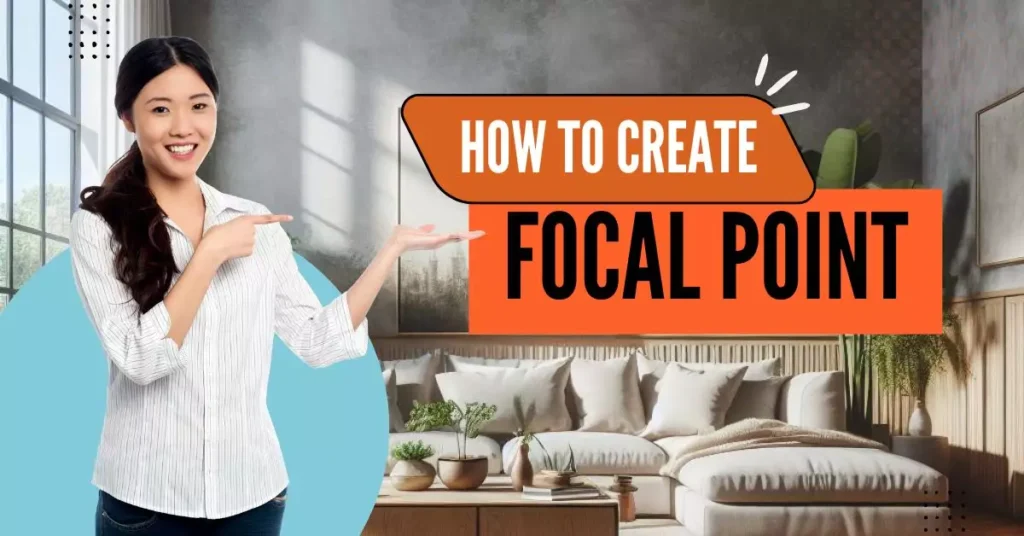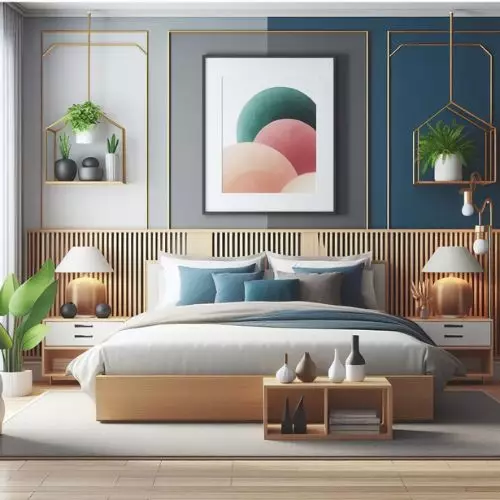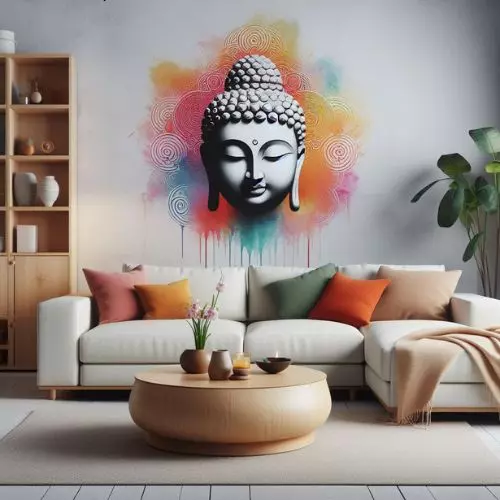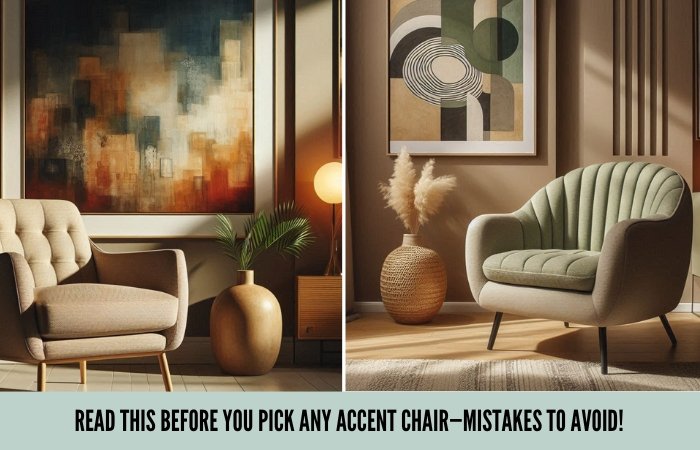Creating a Focal Point in Interior Design: Your Casual Guide to Wow Factor
Ever walked into a room and felt an instant connection with a specific spot? That’s the magical wow factor. It’s the focal point, the main attraction. A focal point is the element that draws your eyes first and holds your attention.
Let’s dive into how you can create that wow focal point in your home in a casual, easy-going way.
(1) What Exactly is a Focal Point?
So, what’s a focal point? In simple terms, it’s the centrepiece. Focal point doesn’t have to be physically in the centre of the room. It’s the centre of attraction or the main attraction of a room. It’s that one element that immediately grabs your attention and sets the tone for the entire space. Think of it as the star player on a sports team—it’s what everyone would love to watch.
(2) The Significance of a Focal Point in Interior Design:
In interior design, a focal point plays a crucial role in capturing the viewer’s gaze and elevating a room’s visual appeal. It serves as the anchor, drawing attention to a specific area and becoming the highlight of the space.
Let me make it simple.
Imagine you have a wonderful sofa, amazing wall art, beautiful upholstery, creative decor pieces, and an exclusive coffee table. What would you expect from guests or even yourself?
Do you want people to appreciate the beauty of each piece individually, as you would in a museum or show room, or do you want them to perceive the room as a cohesive, beautifully decorated living space? I’m sure it’s the latter. Without a focal point, the eye tends to wander aimlessly, trying to take in each item separately, which can be overwhelming and chaotic.
By establishing a focal point, you create a sense of order and hierarchy. The focal point draws the eye first, allowing the other elements to complement and support it. This way, instead of competing for attention, every piece in the room works together to create a harmonious and visually appealing space.
A focal point can be anything from a striking piece of furniture to the warmth of a fireplace, the allure of a window with a scenic view, or the captivating presence of a piece of art.
In short, focal point gives the eyes a place to rest and helps tie the entire space together, creating harmony and flow. It’s all about directing the viewer’s attention to a particular spot, making it the highlight of the room.
(3) What Can Be a Focal Point? The Usual Suspects
In your home, having a clear focal point helps guide the eye and creates a sense of order and intention. Just about anything can be a focal point if you play your cards right. Here are some common examples:
(3.1) Fireplaces: Often naturally become the focal point because they’re large and central, adding warmth and charm to the room.
(3.2) Artwork: A big, bold painting or a stunning sculpture can easily steal the show and set the tone for the entire space.
(3.3) Furniture: A striking sofa, a unique coffee table, or a grand dining table can be the centre of attention, making the room feel inviting and stylish.
(3.4) Architectural Features: Think exposed beams, large windows with a breathtaking view, ornate staircases, French doors, vaulted ceilings, or built-in bookshelves. These elements add character and can naturally draw the eye.
(3.5) Accent Walls: A wall painted in a different color or covered in interesting wallpaper can instantly grab attention and add depth to the room.
(3.6) Natural Architectural Elements: Bay windows, kitchen islands, and dining tables can serve as natural focal points due to their size and function.
(3.7) Large Art or Decor Pieces: A large piece of furniture like a bed, or an oversized piece of artwork, can dominate the room and create a striking visual impact.
By using these elements thoughtfully, you can create a stunning focal point that anchors the room and ties all the decor together harmoniously.
(4) How to Decide on the Perfect Focal Point in Your Room:
Choosing a focal point might seem daunting, but here’s a simple trick: think about what you want people to notice first. Is it a fantastic view from a window? Or maybe a unique piece of furniture? Consider the room’s function and what feature naturally stands out or should stand out.
Here’s how you can identify and create a focal point in different areas of your home:
(4.1) Living Room:
In most living rooms, the focal point is either the TV, a fireplace, or a large piece of art. If you have a fireplace, it often becomes the natural center of attention due to its size and central placement. You can enhance this by adding a mantelpiece or placing a striking piece of art above it. If your TV is the main attraction, make sure it’s positioned at eye level and consider framing it with a stylish console or shelving unit. Large artwork or a gallery wall can also serve as a fantastic focal point, especially if placed above a sofa or on a blank wall.
(4.2) Bedroom:
The bed usually becomes the focal point in a bedroom, especially if it has a striking headboard or is dressed in beautiful linens and pillows. To amplify this, you can use wall art, a statement headboard, or even a canopy. Position your bed against the main wall and dress it up with layers of textiles, cushions, and throws. Wall-mounted lighting or bedside tables with matching lamps can frame the bed, further emphasizing its importance.
(4.3) Dining Room:
In the dining room, the dining table is typically the main attraction. Choose a table that suits the scale of the room and pair it with eye-catching chairs. A chandelier or pendant light hanging above the table can draw the eye and create a warm, inviting ambiance. Additionally, a centrepiece like a vase of fresh flowers or a bowl of fruit can add a touch of elegance. If your dining room has large windows, the view outside can also act as a focal point, so keep window treatments simple to maximize the impact.
(4.4) Kitchen:
The kitchen island often serves as the focal point, especially in open-plan designs. Highlight this area with pendant lighting and ensure its functional and stylish. Decorative bar stools, a striking countertop material, or a display of fresh produce can make the island stand out. If you don’t have an island, the stove or a beautiful backsplash can take centre stage.
(4.5) Bathroom:
In the bathroom, a freestanding tub or a beautifully tiled shower area can be the focal point. Accentuate these features with elegant fixtures, a stylish bathmat, or a piece of art. large mirrors above the vanity can also draw attention and reflect light, making the space feel larger and more inviting.
(4.6) Home Office:
Your desk is likely the focal point in a home office. Position it to face the door or a window, and dress it with functional yet stylish accessories. A statement chair, a large piece of wall art, or a gallery wall behind the desk can enhance the area. Good lighting is crucial, so consider a desk lamp or floor lamp that adds both function and flair.
By thoughtfully identifying and enhancing the focal point in each room, you create a sense of order and aesthetic appeal that makes the space both functional and beautiful.arge piece of art takes the lead.
(5) What Happens if There is No Focal Point?
No focal point? Big problem! Here’s why:
- Chaos: Without a focal point, a room can feel chaotic and overwhelming. There’s no place for the eye to rest, making the space feel cluttered.
- Disconnection: Everything in the room might be beautiful on its own, but without a focal point, the pieces won’t work together harmoniously.
- Lack of Impact: Imagine walking through a museum and trying to appreciate every single piece separately. It becomes exhausting and less enjoyable. Similarly, in your home, visitors’ eyes won’t know where to settle, and the overall impact of the room will be lost.
(6) How Decor Supports Your Focal Point
Decor isn’t just the background noise in your room; it’s the ensemble that harmonizes with your focal point, enhancing its impact and elevating the overall aesthetic. Much like backup singers complement a lead vocalist, decor elements work in harmony to amplify the focal point’s significance.
To maximize the effect of your focal point, consider the following strategies:
(6.1) Complementary Colours:
Select decor pieces that echo the hues of your focal point, creating a cohesive color scheme that draws the eye naturally. For example, if your focal point is a vibrant piece of art with hints of blue and green, incorporate throw pillows or rugs in similar tones to reinforce the visual connection.
(6.2) Textures:
Introduce a variety of textures that add depth and visual interest to the space. A plush rug under a statement coffee table or a collection of textured cushions on a sofa can complement the texture of your focal point, creating a tactile and inviting environment.
(6.3) Styles:
Choose decor items that align with the style and theme of your focal point. Whether it’s contemporary, rustic, or eclectic, ensure that each piece contributes to the overall aesthetic coherence. For instance, if your focal point is a sleek, modern fireplace, opt for minimalist decor accessories that echo its clean lines and understated elegance.
(6.4) Proportion:
Consider the scale of your decor elements in relation to the focal point. Aim for a balanced composition where each piece contributes to the visual hierarchy without overwhelming or overshadowing the focal point. For instance, if your focal point is a grandiose chandelier, select furniture and decor pieces that complement its scale rather than competing for attention.
(6.5) Lighting:
Illuminate your focal point strategically to enhance its prominence. Whether it’s accent lighting directed towards a piece of artwork or ambient lighting that casts a soft glow over a fireplace, thoughtful lighting design can accentuate the focal point’s beauty and create a captivating focal point.
By leveraging decor elements effectively, you can transform your focal point into the centrepiece of your room, capturing attention and infusing the space with personality and style.
(7) The Art of Framing Your Focal Point
Framing your focal point is all about enhancing its presence by surrounding it with complementary elements. It’s like giving your favourite artwork a beautiful frame—it makes it stand out even more. Here are some common ways to frame your focal point:
- Furniture Arrangement: Position your furniture to face the focal point, directing attention towards it and creating a sense of balance in the room.
- Rugs: Place a rug under your focal piece to anchor it and define its space within the room, adding warmth and texture to the overall design.
- Lighting: Illuminate your focal point with spotlighting or strategic lamps, drawing attention to its beauty and creating a captivating ambiance.
- Shelving: Flank your focal point with shelves to showcase decorative items or accessories, framing it with additional visual interest.
- Plants: Add greenery around your focal point to bring life and freshness to the space, softening its edges and creating a harmonious environment.
By framing your focal point with these elements, you can elevate its impact and create a cohesive and inviting space that truly shines.
(8) Designing Your Space Around a Focal Point: Top Tips
- Start with the Focal Point: Once you’ve identified or created your focal point, design the rest of the room around it.
- Keep it Balanced: Ensure that the focal point is proportional to the room.
- Use Contrast: Make your focal point stand out with contrasting colors or textures.
- Don’t Overdo It: Stick to one main focal point per room to avoid visual clutter.
- Accessorize Wisely: Use decor items that complement and enhance the focal point without overshadowing it.
(9) What to Avoid When Creating a Focal Point
Creating a focal point is key to achieving a harmonious and visually appealing space, but there are common pitfalls to avoid:
- Overcrowding: Resist the temptation to clutter your focal point with too many items. Each element should have room to breathe and stand out on its own.
- Ignoring Scale: Ensure that the scale of your focal point is appropriate for the size of the room. A disproportionately large or small focal point can throw off the balance of the space.
- Lack of Cohesion: Strive for cohesion between your focal point and the surrounding decor. Elements should complement each other in style, colour, and theme to create a cohesive and unified look.
- Overcomplicating: Keep it simple to allow your focal point to shine. Avoid overloading it with unnecessary details or accessories that detract from its impact.
(10) Unlocking Impact: The Power of the Isolation Effect
In both very large and very small living spaces, creating a focal point can be challenging. In such situations, leveraging the isolation effect is an excellent strategy. When something stands alone or is separated from its surroundings in some way, it naturally draws attention.
For example, in a bedroom where the bed is not immediately visible upon entering, placing an accent chair in a corner and framing it with decor like plants and floor lamps can establish a cozy focal point.
Alternatively, if space is limited, installing a wall-mounted rack for books or adding shelves for decorative items can achieve a similar effect. These space-saving solutions not only help in organizing your belongings but also serve as stylish focal points in their own right.
In a spacious living room, consider creating separate conversation areas, cozy reading nooks, or a stylish coffee bar to anchor different areas of the room and create distinct focal points.
You can find various options for wall-mounted racks and shelves online, such as these.
In a spacious living room, consider creating separate conversation areas, cozy reading nooks, or a stylish coffee bar to anchor different areas of the room and create distinct focal points.
(11) Wrapping It Up
Creating a focal point in interior design doesn’t have to be complicated. It’s all about knowing where you want the eye to go first and building around that. Whether it’s a stunning piece of art, a beautiful fireplace, or even a cozy piece of furniture, the focal point is your room’s main event. So, go ahead and experiment, have fun, and watch how a well-placed focal point can transform your space!










